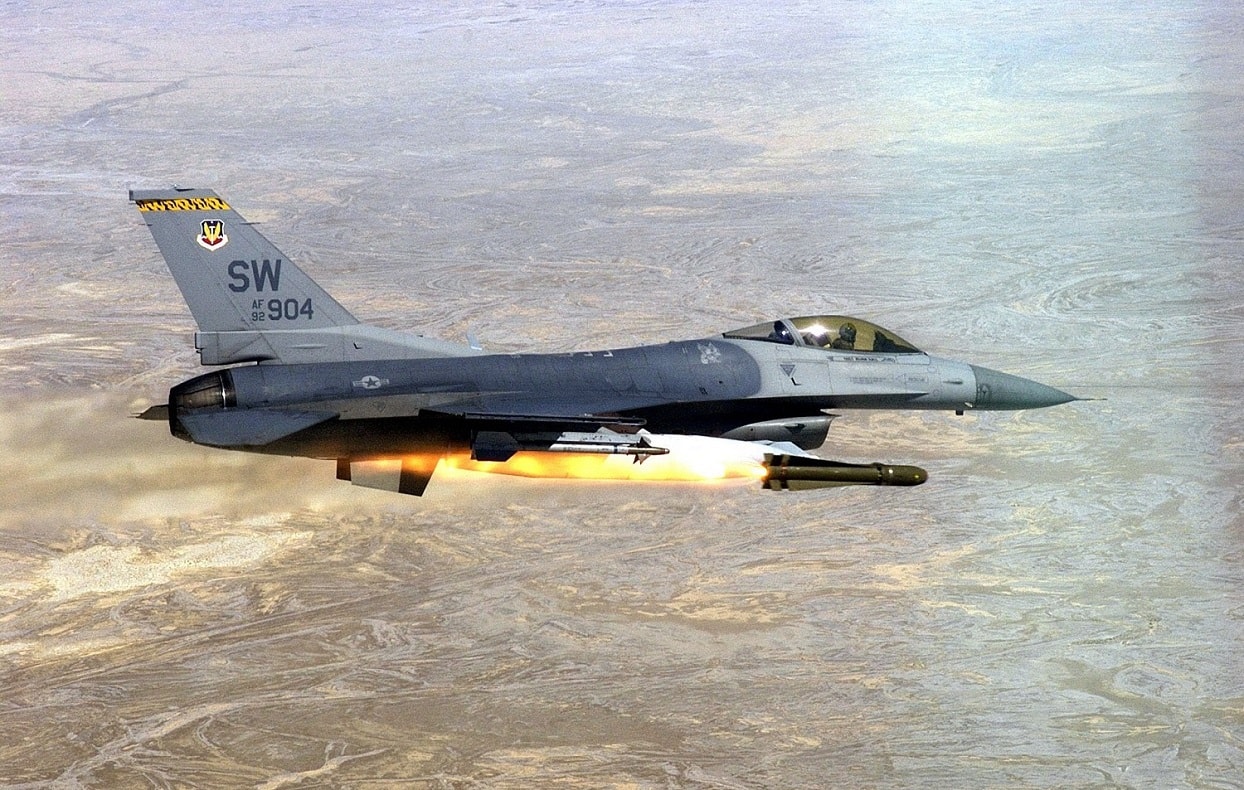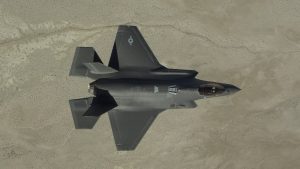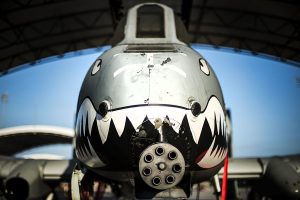The F-16 is one of the most popular fighters with over 4,500 delivered over the years. We did a deep dive to understand why.

F-16, A History: It was the end of the Vietnam War. The U. S. Air Force evaluated its performance in dogfighting during that conflict and determined that it had problems. The Air Force was losing large numbers of fighters and airplanes over Vietnam. This aerial combat was compared to the Korean war in which pilots had an 8-to-one kill ratio against communist airplanes. In Vietnam, this dropped to 5.5-to-one. The United States lost at least 1,700 aircraft during the war – 517 were due to technical problems, but this was still seen as an alarming figure. F-105 Thunderchiefs and F-4 Phantoms bore the brunt of Air Force losses.
It was time for a new fighter – enter the F-16 Fighting Falcon. In 1973, the Air Force wanted a lightweight, fast, and maneuverable air superiority warplane. By 1974, there was already a flying prototype called the YF-16 from General Dynamics. It reached 461 miles per hour and 30,000 feet in one 90-minute test flight that year. Not as fast as the Air Force wanted but at least the YF-16 was up in the air and going through test and evaluation flights.
Then the YF-16 started cooking. It flew at Mach 2.0 with maneuvers approaching 9G, and altitudes above 60,000 feet. There was a competition with the YF-17 in 1975 that later became the F/A-18 Hornet. The Air Force was pleased with the YF-16 and ordered the first F-16A, a single-seater, and the F-16B double-seater. John McLucas, the Air Force secretary at the time said the YF-16 had “lower operating cost, longer range, and better transient maneuverability,” according to F-16.net.
The performance of the F-16 immediately attracted interest from international air forces after the first flight of the Fighting Falcon in 1976. Belgium, Netherlands, Denmark, and Norway wanted to buy the F-16 and this consortium also produced some of the jet’s components in partnership with the United States. A total of 348 were ordered in that first production run. Through more testing, the U. S. Air Force determined that the F-16 could serve as a fighter and bomber. It could fly in all weather and at night. Enthused by this development, the service branch ordered 783 F-16As and Bs. The first F-16A was sent to the 388th Tactical Fighter Wing at Hill Air Force Base in 1979.
Aviator’s Perspective Gives You an Idea of Its Power
The F-16 used to wow pilots with its speed and climbing ability. In 2020, Air Force aviator Justin Lee recalled an adventurous flight over South Korea. He told Sandboxx News how he pushed the F-16 to reach its maximum speed of MACH 2.0. While the F-16 could go that fast, pilots rarely went there due to the stresses on the airframe. But Lee wanted to see what this bird could do.
The F-16 he flew had just had a new engine installed and it was “clean” – meaning that no bombs or missiles were affixed to its wings. Lee was excited to have what he called a “hot rod” on his hands. Lee’s commander wanted him to first try to achieve high altitude and other maneuvers. Fuel was the issue. Lee said, “The F-16 could only carry 7,000 pounds of internal fuel; never enough with the monster engine behind me burning up to 50,000 pounds of fuel per hour.” After 15 minutes of the first evaluation parameters, he was ready for the maximum speed run. But he figured with the afterburner engaged, he would have only five minutes of fuel left, so it was time to scoot.
“At 1.6 Mach, the jet started to shake. I was expecting it — the F-16 has a flight region around that airspeed that causes the wings to flutter. Still, this jet had a lot of hours on the airframe, and if anything were to fail, the breakup would be catastrophic,” Lee recalled.
“Slowly 1.7 Mach ticked by, next 1.8, and then at 1.9, everything smoothed out. I was now traveling 1,500 miles per hour over the Yellow Sea. The cockpit started feeling warm so I took my hand off the throttle and put it about a foot away from the canopy and could feel the heat radiating through my glove, similar to sticking your hand in an oven.”
This flight showed just what the F-16 was capable of and multiple variants were developed over the years with feedback from pilots like Justin Lee.
The F-16 flew during Operation Desert Storm and eliminated a slew of ground targets. The F-16 flew the most sorties over Iraq than any other airplane. After 9/11, it was also a workhorse with combat deployments in the Middle East and South Asia.
The F-16 is 49 feet long and weighs a maximum of 37,500 pounds loaded with fuel and weapons. The payload is impressive. The F-16 can fire a 20mm cannon with 500 rounds. It can carry up to six air-to-air missiles (Sidewinders and AMRAAMs), plus air-to-surface missiles (Maverick, HARM and Shrike), and precision-guided bombs (JDAMs), and electronic countermeasure pods.
By 2015, an F-16V fourth-generation version was nicknamed the Viper. The F-16V has a modern Active Electronically Scanned Array radar. The radar can track more than 20 targets. The avionics were improved, and navigation became more precise. The F-16V uses a data link that can integrate with the F-22 and F-35.
“When I look back at my two-decade career flying fighter jets, the F-16 is the one I loved the most,” explained a Senior Air Force Officer who recently retired after a twenty-plus year career. “The F-16 was nimble, enemies feared it and I always felt it was easy to fly. I knew that I had always been flying the best plane in the skies for many years. I always felt I had the advantage over anything else I would ever encounter. And that is a really good feeling to have.”
Sometimes F-16 squadrons will award maintenance personnel a backseat flight in the fighter for excellent performance. My brother-in-law was an avionics technician for the F-16. His commander selected him to take a flight in the F-16 after he won airman of the month. He said after the initial climb and dive he was so overwhelmed with the high Gs that he threw up almost immediately.
F-16s are one of the most popular fighters in history and over 4,500 have been delivered over the years. It’s amazing that an airplane inspired by the Air Force’s actions during the Vietnam War is still flying. The fighter is expected to have more upgrades and versions for various air forces. It will still be relevant in the years to come.






